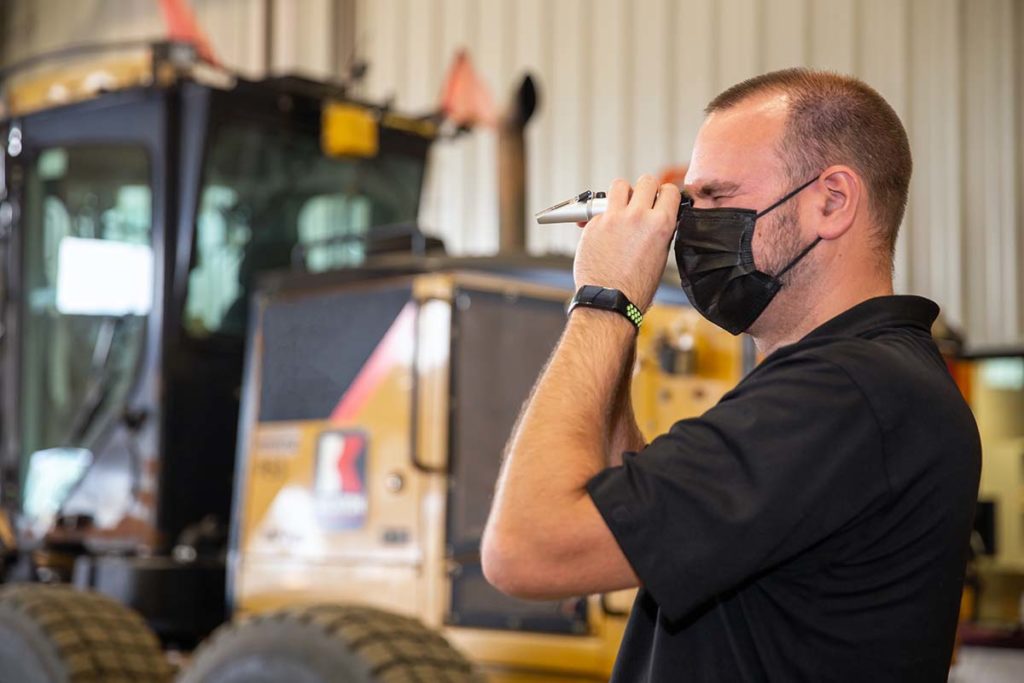Coolant is essential to keeping your engine from overheating. Something you might not know is that it also keeps your radiator from freezing during the cold winters in Canada. Our climate means that checking your coolant is even more important. Coolant/Antifreeze is considered a "fill and forget" fluid. You are probably checking the levels of it (maybe doing a top up or two) but most of the time coolants aren't checked unless you're experiencing a problem. You should be checking the freeze point, pH, nitrates, and carboxylates. A proactive coolant maintenance program will save you money and prevent unplanned downtime.
How do I check my coolant/antifreeze?
Checking your coolant is a simple process. Pull a sample from the radiator reservoir and use a refractometer to give you an immediate freeze point of your antifreeze.

An ideal 50/50 mix of antifreeze and water has a freeze point of -37°C.
But what if it's not reading -37°C?
If your freeze point is lower than -37°C your glycol concentration is too high. A high glycol concentration means you are losing money each time you start your engine. Your coolant is thicker than it needs to be which makes your water pump work harder to circulate the fluid. When your water pump works harder you use more fuel and lose more money. The system is also not transferring heat efficiently. The increase in engine temperature results in a shorter lifespan of your oil.
If your freeze point is higher than -37°C your glycol concentration is too low. A low glycol concentration means you do not have the freeze protection necessary for Canadian winters. You probably keep an eye out for a radiator boil over - when an engine runs too hot steam blows out of the radiator. In fact, the damage of partial freezing could be much more severe because there is no steam to indicate an issue so you won't know to turn the engine off until it seizes. Not only could you damage your engine due to freezing but the additive levels in your antifreeze will begin to dilute to provide your system with the proper protection. Diluted additives cause premature corrosion and seal failure.
Other items you should check as part of a proactive coolant maintenance program are pH, nitrates, and carboxylates. These are all simple tests done with strips dipped into your coolant to check the colours against the standards. Knowing that these additive levels are correct will help ensure that your coolant system is protected.
Low pH
Low pH (below 7) indicates that your coolant needs to be changed. Failure to change your coolant when it becomes acidic can cause corrosion of the liners, cylinder blocks and heads.
Low Nitrites
Low nitrites can indicate an incorrect coolant top up of your system. This can happen if you topped up with a nitrite-free coolant. Low nitrates means there may not be enough additive in your coolant to protect the liners from pitting.
Low Carboxylates
Carboxylates in your extended life coolants provide protection against wear and pitting. Low levels of this additive mean poor performance when protecting the system against wear. Low carboxylates combined with low glycol levels indicate an incorrect top up with water.
Testing your coolant is quick and cost effective. At 49 North Lubricants we offer free coolant testing and consultations.
Please reach out to your sales representative or call 1-800-463-0354 to book a consultation today.